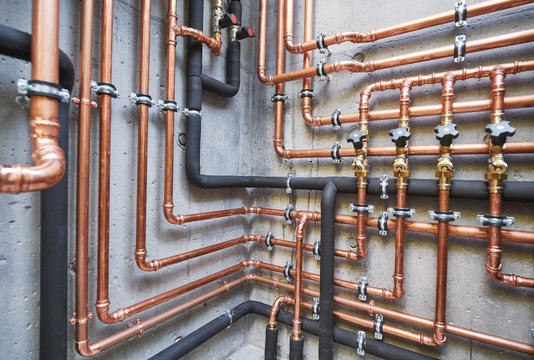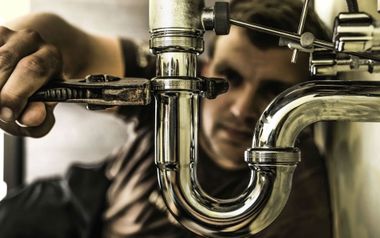Structure of Your Home's Plumbing System: Why It Matters
Structure of Your Home's Plumbing System: Why It Matters
Blog Article
They are making a few good points related to The Inner Workings of Your Home's Plumbing overall in this article down the page.

Recognizing how your home's plumbing system functions is essential for every property owner. From providing tidy water for alcohol consumption, food preparation, and showering to safely removing wastewater, a well-kept plumbing system is important for your family members's wellness and convenience. In this thorough overview, we'll discover the elaborate network that composes your home's plumbing and offer ideas on upkeep, upgrades, and handling common issues.
Introduction
Your home's plumbing system is more than just a network of pipes; it's a complicated system that guarantees you have accessibility to tidy water and effective wastewater removal. Recognizing its parts and just how they interact can aid you stop expensive repair services and make sure whatever runs smoothly.
Basic Components of a Pipes System
Pipelines and Tubes
At the heart of your pipes system are the pipes and tubing that carry water throughout your home. These can be made of different materials such as copper, PVC, or PEX, each with its advantages in terms of durability and cost-effectiveness.
Components: Sinks, Toilets, Showers, etc.
Fixtures like sinks, toilets, showers, and bath tubs are where water is made use of in your house. Recognizing just how these components link to the plumbing system aids in detecting issues and preparing upgrades.
Valves and Shut-off Factors
Shutoffs manage the flow of water in your pipes system. Shut-off valves are essential during emergency situations or when you need to make repairs, allowing you to separate parts of the system without interfering with water circulation to the whole home.
Supply Of Water System
Main Water Line
The main water line connects your home to the municipal water or an exclusive well. It's where water enters your home and is dispersed to numerous components.
Water Meter and Stress Regulatory Authority
The water meter procedures your water usage, while a pressure regulator guarantees that water streams at a risk-free pressure throughout your home's plumbing system, preventing damages to pipes and components.
Cold Water vs. Hot Water Lines
Understanding the difference between cold water lines, which provide water directly from the primary, and warm water lines, which bring warmed water from the water heater, helps in fixing and planning for upgrades.
Drain System
Drain Pipes Water Lines and Traps
Drain pipes bring wastewater away from sinks, showers, and bathrooms to the sewer or septic system. Traps protect against drain gases from entering your home and additionally trap particles that might create clogs.
Air flow Pipes
Air flow pipes enable air into the drain system, preventing suction that might reduce drain and create traps to vacant. Correct ventilation is necessary for maintaining the honesty of your plumbing system.
Value of Correct Drainage
Ensuring appropriate water drainage avoids back-ups and water damage. On a regular basis cleaning drains and keeping traps can avoid pricey repairs and prolong the life of your pipes system.
Water Heating System
Kinds Of Hot Water Heater
Water heaters can be tankless or conventional tank-style. Tankless heaters warm water as needed, while containers store heated water for instant use.
Upgrading Your Pipes System
Factors for Upgrading
Upgrading to water-efficient components or changing old pipelines can improve water high quality, minimize water costs, and increase the value of your home.
Modern Pipes Technologies and Their Advantages
Discover technologies like smart leak detectors, water-saving bathrooms, and energy-efficient hot water heater that can conserve money and minimize ecological impact.
Cost Considerations and ROI
Determine the ahead of time prices versus long-term savings when thinking about plumbing upgrades. Numerous upgrades pay for themselves with minimized utility expenses and less repair services.
Just How Water Heaters Attach to the Pipes System
Understanding how water heaters connect to both the cold water supply and warm water circulation lines assists in detecting concerns like inadequate hot water or leaks.
Maintenance Tips for Water Heaters
Regularly purging your hot water heater to get rid of debris, examining the temperature level setups, and checking for leaks can extend its life expectancy and improve power performance.
Usual Pipes Concerns
Leakages and Their Reasons
Leaks can occur due to maturing pipelines, loose fittings, or high water stress. Attending to leakages quickly avoids water damage and mold development.
Blockages and Blockages
Clogs in drains pipes and bathrooms are typically caused by flushing non-flushable things or an accumulation of grease and hair. Using drainpipe displays and being mindful of what decreases your drains pipes can avoid blockages.
Indications of Plumbing Problems to Watch For
Low tide stress, slow-moving drains pipes, foul odors, or abnormally high water expenses are indications of prospective plumbing issues that should be addressed immediately.
Pipes Maintenance Tips
Routine Assessments and Checks
Arrange annual plumbing examinations to capture problems early. Look for indicators of leaks, deterioration, or mineral accumulation in faucets and showerheads.
Do It Yourself Maintenance Tasks
Simple jobs like cleansing faucet aerators, checking for commode leaks making use of dye tablet computers, or insulating revealed pipes in cold environments can avoid significant plumbing concerns.
When to Call an Expert Plumber
Know when a plumbing concern needs professional know-how. Attempting complicated repairs without appropriate knowledge can result in even more damage and greater repair work prices.
Tips for Decreasing Water Use
Straightforward habits like taking care of leakages promptly, taking much shorter showers, and running full loads of washing and dishes can save water and reduced your utility expenses.
Eco-Friendly Pipes Options
Think about lasting plumbing products like bamboo for floor covering, which is durable and eco-friendly, or recycled glass for counter tops.
Emergency situation Preparedness
Steps to Take Throughout a Plumbing Emergency
Know where your shut-off valves lie and how to switch off the water system in case of a ruptured pipe or significant leak.
Significance of Having Emergency Situation Calls Handy
Keep call information for local plumbing technicians or emergency situation solutions readily available for fast feedback during a plumbing situation.
Ecological Impact and Conservation
Water-Saving Components and Home Appliances
Mounting low-flow faucets, showerheads, and commodes can significantly minimize water use without sacrificing efficiency.
Do It Yourself Emergency Fixes (When Suitable).
Temporary repairs like making use of duct tape to patch a dripping pipeline or placing a container under a trickling tap can reduce damages till a professional plumbing shows up.
Verdict.
Understanding the anatomy of your home's plumbing system empowers you to maintain it efficiently, saving time and money on repair services. By complying with regular maintenance regimens and remaining informed about modern plumbing modern technologies, you can guarantee your pipes system runs effectively for many years to find.
Understanding Your Home Plumbing System: A Comprehensive Guide
Plumbing System: The Lifeline of Your Home
At its core, the plumbing system is designed to perform two primary functions: bring fresh water into your home and remove wastewater. The system is a network of pipes, fixtures, and other components that transport water and sewage. Residential plumbing systems include potable water supply lines, drain-waste-vent (DWV) systems, and various plumbing fixtures that make water use in daily tasks possible.
Key Components:
Water Supply: This part of your plumbing system brings municipal water into your home, passing through the main water supply line. It s responsible for supplying all water needs, from drinking to bathing.
Drainage System: It carries waste and water away from your home to the sewer or septic system. This system includes all the piping within your home that leads to external sewage or septic systems.
Vent System: An essential yet often overlooked component, the vent system allows sewer gases to escape and lets air into the drainpipes, ensuring water and waste move correctly through the system.
Fixture: More Than Just Taps and Toilets
Plumbing fixtures are the most interactive parts of the plumbing system, including faucets, showers, toilets, and sinks. Each fixture is connected to the plumbing system and plays a role in either the delivery of freshwater or the disposal of waste and wastewater.
Types of Fixtures:
Faucets and Sinks: Used for washing hands, dishes, and other daily water needs. Toilets: Dispose of human waste through the sewage system. Bathtubs and Showers: Provide bathing facilities, requiring both hot and cold water supply. Water Supply: The Source of Life
The water supply system is a critical component, ensuring that potable water is available throughout your home for various uses, including drinking, cooking, and cleaning. This system consists of pipes that distribute water to different parts of the house, controlled by valves to regulate the water flow.
Types of Plumbing: Materials and Methods
Various types of plumbing systems and materials are used in residential settings, each with its advantages and applications. From copper and PVC pipes for water supply to cast iron and ABS for drainage, the choice of materials can impact the longevity and efficiency of your plumbing system.
https://intownplumbingtx.com/articles/home-plumbing-system-guide/

We are very inquisitive about and I really hope you enjoyed reading my page. Sharing is nice. Helping others is fun. We take joy in your readership.
View More Report this page